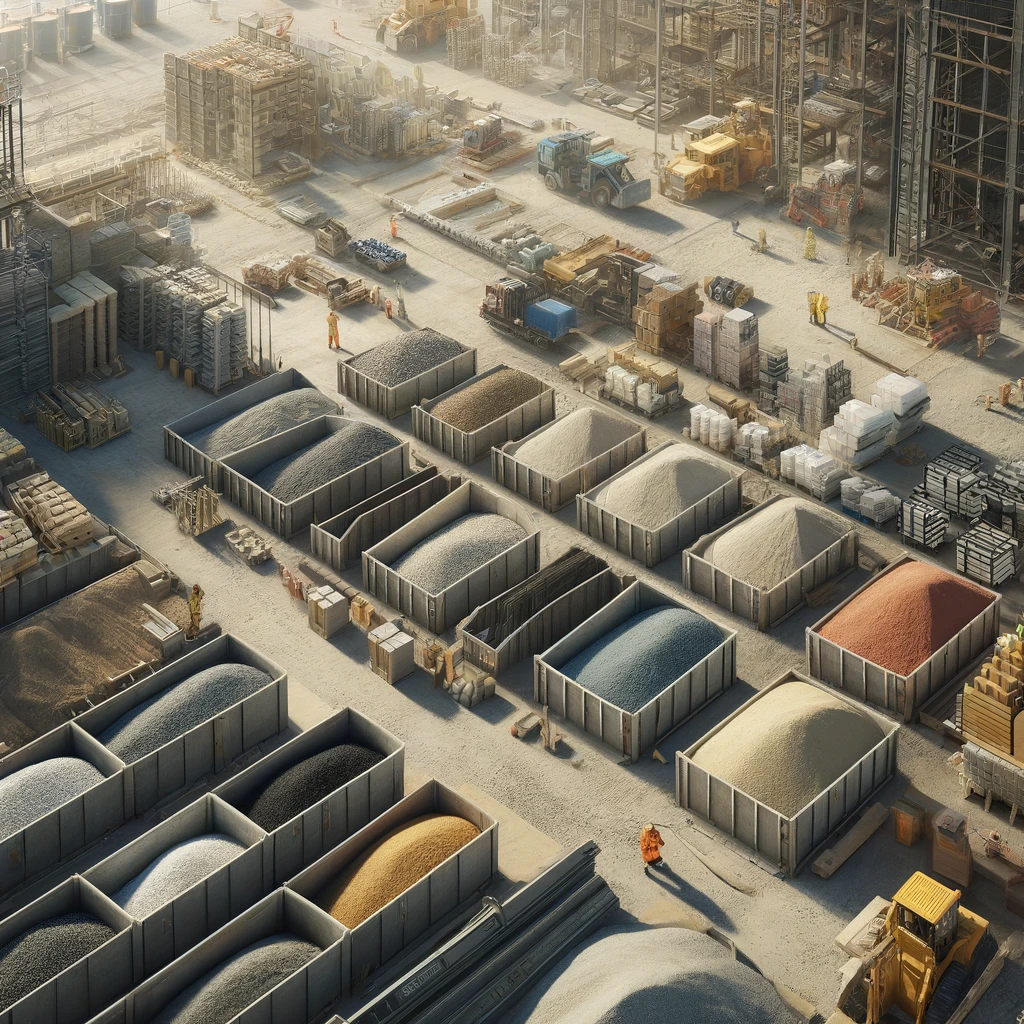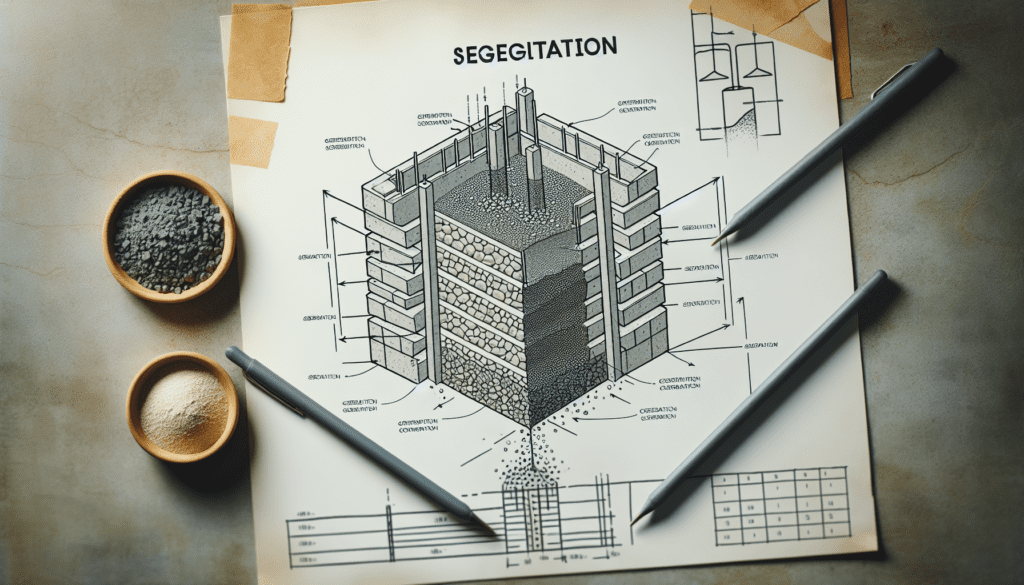Segregation and its Effects
In any construction project, one term that’s bound to keep popping up is ‘material segregation’.
Predominantly seen in the production of asphalt or concrete, segregation refers to the material housing variations within these mixes.
But why should this concern us?
There is more than meets the eye with this seemingly trivial detail. The consequences of segregation in construction are not just physical, but also have financial implications.

Table of Contents
Understanding Material Segregation in Construction
Material segregation in construction is a common issue that can negatively impact the final product’s strength, durability, and aesthetics.
What is Material Segregation?
Before identifying the causes, it’s valuable to define material segregation. In construction, segregation refers to the separation of particles or materials based on their sizes, shapes, or specific gravities.
This phenomenon can lead to an inconsistent mix and consequently compromise the structural integrity of the built structure.
Causes of Material Segregation
Many factors contribute to material segregation in construction. Here, we’ve put together a list of key reasons:
Improper Handling and Transportation
The way materials are handled and transported can lead to segregation. Inconsistent or excessive movement can cause particles to separate.
Inappropriate Storage
Storing materials improperly or for extended periods can lead to segregation. Moisture, wind, and gravity can affect stored materials over time.
Unsuitable Equipment
Using the wrong equipment or using equipment incorrectly can cause material segregation. For example, dumping materials from excessive height can cause particles to scatter and separate.
Poor Loading Techniques
If materials are not properly loaded onto equipment, they can segregate. This is particularly true for aggregate materials like concrete, asphalt, or gravel.
Preventing Material Segregation
As with any construction-related issue, prevention is often the best solution for material segregation. Here’s how to address the issues explained above:
Handling and Transportation
Be gentle when handling and transporting materials. Regularly check and stabilize any motion-induced equipment to minimize jarring, vibration and bounce.
Storage
Store materials properly and not for extended periods. Shield storage areas from environmental elements that may cause segregation.
Equipment
Equip the team with suitable tools and training to handle materials correctly and avoid segregation.
Loading Techniques
Implement controlled loading techniques and avoid dumping materials from heavy heights.
Material segregation in construction can result in poor quality structures. The good news is that through careful handling and transportation, proper storage, the use of suitable equipment, and implementing suitable loading techniques, it’s possible to minimize the likelihood of material segregation occurring.
Potential Costs due to Segregation in Construction Projects
Potential Immediate Costs
Rework Cost
When segregation happens, teams often rework to maintain expected quality. This additional labor and material cost raises project overheads.
Additional Testing and Inspection Cost
Confirming segregation necessitates further testing apart from regular inspections. This diagnostic cost increases overall project expenditure.
Long-term Costs
Shortened Life Expectancy of the Road
Roads with segregated materials degrade faster due to uneven distribution of components. This compromises the structure’s integrity and requires earlier-than-expected repair or replacement – meaning more outlay over time.
Increased Maintenance Cost
Segregated constructions need more frequent maintenance. The more inputs for repair or preventive efforts will inflate costs immensely over the lifespan of the project.
Legal Costs
Litigation can be a consequence of road accidents due to poor road conditions steaming from segregation. These are unforeseen but significant expenses ensued due to segregation.
User inconvenience cost
Potholes or rough surfaces caused by segregation often lead to user inconvenience. The monetary equivalent of this inconvenience also adds on to the project’s total cost.
Potential Cost Breakdown Table
| Costs | Immediate | Long-term |
|---|---|---|
| Rework Cost | ✔️ | ❌ |
| Additional Testing and Inspection Cost | ✔️ | ❌ |
| Shortened Life Expectancy of the Road | ❌ | ✔️ |
| Increased Maintenance Cost | ❌ | ✔️ |
| Legal Costs | ❌ | ✔️ |
| User inconvenience cost | ❌ | ✔️ |
In conclusion, understanding and mitigating segregation can lead to substantial project savings, both immediate and long term. It plays a significant role in successful project execution and enhances road performance and longevity.1
References

Preventing Segregation in Construction
The Dangers of Segregation
Segregation in construction can have detrimental impacts on the materials and overall integrity of the built structure. This can manifest in the form of:
- Poor compaction leading to reduced load-bearing capacity
- Cracks or holes in the finished product
- Inconsistent texture, color, and finish
How Can a Construction Project Manager Prevent Segregation?
Luckily, a construction project manager can prevent segregation through a host of effective techniques and practices.
Techniques for Preventing Segregation
| Techniques | Description |
|---|---|
| Properly Design the Mix | Ensure the mix design is well-graded and has a sufficient binder to maintain cohesion between the aggregates. |
| Check Equipment for Proper Functioning | Regularly inspect and maintain the machines that handle the materials to prevent mechanical-induced segregation. |
| Control Load Heights | Drop heights should be controlled. Minimizing the free-fall of aggregates can prevent segregation. |
Continual Monitoring
Regular monitoring and testing of the mixture on site can help identify segregation early and allow for immediate rectification. Specific methods include visual inspections and sieve analysis tests (*Source*).
In A Nutshell
Preventing segregation in construction is a manageable task that requires insight, diligent planning, and regular monitoring. By taking the precautions and steps mentioned above, a construction project manager can assure that structures are robust, durable, and aesthetically pleasing.
That’s A Wrap On Material Segregation
In conclusion, we’ve discovered that segregation in construction projects introduces a multitude of potential costs, both immediate and long term.
From our perspective, rework and additional testing inflate current expenses while reduced road longevity, increased maintenance, litigation costs, and user inconvenience significantly burden long-term finances.
It’s clear that understanding and curbing segregation can lead to crucial project savings. In our experience, taking prudent measures to prevent segregation is not just beneficial, it’s essential for a project’s overall success.
Focusing on the quality of the material mix not only enhances road performance but also prolongs the road’s lifespan, positioning it as a wise investment for any construction venture.






